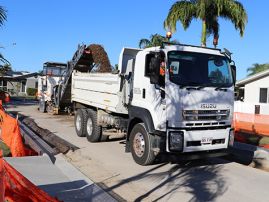City nears water pumping trigger point
Date published: 31 October 2016
Townsville City Council will commence pumping within weeks as the city’s Ross Dam drops closer to the 15 per cent trigger point.
Readings today put the dam at 15.8 per cent, dropping at a rate of half-a-percent (0.5) each week, meaning pumping could start as early as November 14. The exact date is variable depending on usage and rainfall in the catchment.
Water restrictions will remain at Level 3.
Townsville Mayor Jenny Hill said the trigger point represented a balance between ensuring the city’s water security and avoiding excessive evaporation.
“Townsville is in the grips of the deepest drought since the mid 1990s when the city pumped from the Burdekin for almost a year,” Cr Hill said.
“The last time the city pumped water was 2006 and pumping did not start until the dam was at 5 per cent capacity.
“We’re a different city today and the sensible approach is to pump sooner to give us greater protection against another failed wet season.
“Having said that, it’s important to understand that at $27,000 a day to run the pumps, we all need to continue to do our bit to conserve water and that means Level 3 water restrictions will still be necessary.”
Water and Waste Committee Chairman Cr Paul Jacob urged residents maintain the vigilance on water consumption.
“Data shows that rainfall over the last three years has been in the lowest 10 per cent on record,” Cr Jacob said.
“The latest prediction from the weather bureau shows only a 40 per cent chance of above median rainfall from October to December.
“The challenge for our community is to keep water use down as much as possible as even with pumping, the way the dam is shaped mean levels will continue to drop.”
Current data shows the city’s daily consumption rates has crept to 102ML a day, up from 85-95ML in August.
The Haughton pipeline from the Burdekin system delivers up to 130 Megalitres per day although between 20 and 40ML is lost each day through evaporation. The pipeline was established in the 1980s to provide a back-up to supplies in the Ross and Paluma dams to meet the city’s daily needs in times of drought.





